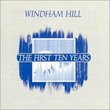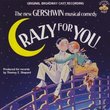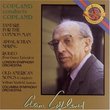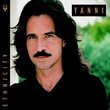| All Artists: Beethoven, Toscanini, NBC Symphony Orchestra Title: Arturo Toscanini: Ludwig Van Beethoven Symphonies Nos. 1,2,3,4 NBC Symphony Orchestra Vol. 1: 2 CD Set Members Wishing: 0 Total Copies: 2 Label: RCA Release Date: 11/24/1998 Genre: Classical Styles: Historical Periods, Classical (c.1770-1830), Symphonies Number of Discs: 2 SwapaCD Credits: 2 UPC: 743215583523 |
Search - Beethoven, Toscanini, NBC Symphony Orchestra :: Arturo Toscanini: Ludwig Van Beethoven Symphonies Nos. 1,2,3,4 NBC Symphony Orchestra Vol. 1: 2 CD Set
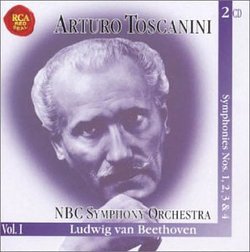 | Beethoven, Toscanini, NBC Symphony Orchestra Arturo Toscanini: Ludwig Van Beethoven Symphonies Nos. 1,2,3,4 NBC Symphony Orchestra Vol. 1: 2 CD Set Genre: Classical
This CD plays the performance of Ludwig Van Beethoven Symphonies # 1,2,3 & 4 by Artuto Toscanini ![header=[] body=[This CD is available to be requested as disc only.]](/images/attributes/disc.png?v=15401716) ![header=[] body=[This CD is available to be requested with the disc and back insert.]](/images/attributes/disc_back.png?v=15401716) ![header=[] body=[This CD is available to be requested with the disc and front insert.]](/images/attributes/disc_front.png?v=15401716) ![header=[] body=[This CD is available to be requested with the disc, front and back inserts.]](/images/attributes/disc_front_back.png?v=15401716) |
Larger Image |
CD DetailsSynopsis
Product Description This CD plays the performance of Ludwig Van Beethoven Symphonies # 1,2,3 & 4 by Artuto Toscanini Similarly Requested CDs
|
CD ReviewsLyric and Technically Outstanding Alexander Baron | Vestal, NY United States | 06/16/2002 (5 out of 5 stars) "These discs are among the definitive editions of Beethoven's symphonies. Technically, there is no stressing of harmony over melody. The listener can hear every note that is played by any instrument. As Toscanini is not a romantic, there are few gradual tempo changes (Crescendo, diminuendo, etc.). Instead,Toscanini essentially uses block dynamics most of the time. The symphonies are played in classical style, with somewhat taut phrasing and sound. However, this is not to say that these recordings are devoid of lyricism and emotion. Szell's Beethoven is technically perfect, in classical style, unlyric, and unemotional. Toscanini's Beethoven is (nearly) technically perfect, in classical style, lyric, and emotional. In these recordings, themes are masterfully connected one to the next, and the music flows. The First, Second, and Fourth symphonies represent Beethoven in his happy moods. Toscanini makes them sound joyful without being overly happy or cute. The Third symphony has drama, and its Funeral March is magnificent by any standards. The Egmont Overture is less weighty than it is on some other recordings. The remastering was good, but not perfect. If you own only one edition of symphonies 1-4, this should be it." Toscanini - Beethoven: The magic reveiled..... Ytzan | Athens, GR | 04/20/2003 (5 out of 5 stars) "I was very reluctant to buy this set. First because of the mono sound and then because of Toscanini's fast tempos that in my mind would harm the music. Well, I was wrong. The sound is not bad at all for its' age and the fast tempos bring a new vitality to the music. A winner!!!!" Back to the bad old sonics--what happened? Santa Fe Listener | Santa Fe, NM USA | 12/13/2005 (2 out of 5 stars) "After the glorious remastering of Toscanini's Verdi Requiem and Falstaff, I assumed we were out of the woods. But these early Beethoven symphonies (#1-4) are in snarly, gnarly sound. A great deal depends on what the engineers have to work with, of course. Even so, each performance is a trial sonically, with the best being the Fourth and Second, while the Eroica comes out worst. These readings are from 1949-53, yet the Egmont Over., which sounds thin and screechy, is the latest. All were done in Carnegie Hall, not the notorious Studio 8-H, but on these discs there's not much hint of warm hall acoustics.
For those who can withstand the glaring trumpets, crunchy climaxes, and wiry violins, I'm not sure there are great performances to be heard here. Toscanini basically performs each piece the same, with strong attacks, over-emphasis on sforzandos, rushed tempos as a rule (though not always), and a tensile line. His admirers will like these features; I found them nerve-wracking. The NBC Sym. is surprisingly scrappy in the finales of Sym. 2 and 4, and much of the Eroica lacks eloquence. The slow movements show up well, however, thanks to Toscanini's feeling for how to shape a melodic line. Overall, this is the most disappointing of the "Immortal" series so far." |

 Track Listings (9) - Disc #1
Track Listings (9) - Disc #1